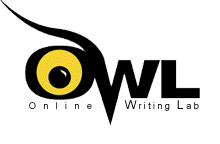



1. Read the abstract
An abstract is a summary of the article, and will give you an idea of what the article is about and how it will be written. If there are lots of complicated subject-specific words in the abstract, the article will be just as hard to read.
2. Read the conclusion
This is where the author will repeat all of their ideas and their findings. Some authors even use this section to compare their study to others. By reading this, you will notice a few things you missed, and will get another overview of the content.
3. Read the first paragraph or the introduction
This is usually where the author will lay out their plan for the article and describe the steps they will take to talk about their topic. By reading this, you will know what parts of the article will be most relevant to your topic!
4. Read the first sentence of every paragraph
These are called topic sentences, and will usually introduce the idea for the paragraph that follows. By reading this, you can make sure that the paragraph has information relevant to your topic before you read the entire thing.
5. The rest of the article
Now that you have gathered the idea of the article through the abstract, conclusion, introduction, and topic sentences, you can read the rest of the article!
To review: Abstract → Conclusion → Introduction → Topic Sentences → Entire Article
Used with permission from the Undergraduate Library, University of Illinois at Urbana-Champaign for use or adaptation of materials.
C |
R |
A |
A |
P |
| Currency | Relevance | Authorship | Accuracy | Purpose |
| Look for the publication date of the website, frequent updates, and dates for specific articles. | Does the information provided by the website meet your research need? |
Websites can be produced by individuals or organizations. Reputable websites will have authorship information easily visible, including both the authors' names and credentials. | To use information in your research it must be judged accurate and verifiable before use. |
A website's purpose is the reason it was created. This should be very clear. Note that some websites might present opinions as facts, but they are actually attempting to sell a product or persuade you. |

Gordon College is New England’s top Christian college, located on the North Shore of Boston in Wenham, MA.
Gordon College | 255 Grapevine Road, Wenham, MA 01984 | Telephone 978.927.2300